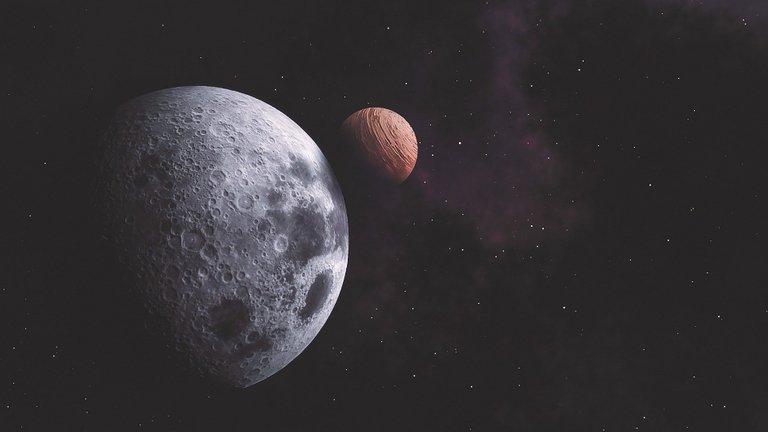Smallest Dark Matter Clusters Found By Hubble
Hubble's Space Telescope examined eight chosen quasars from the deep space – each of them is being gravitationally lensed by a large galaxy. The images of these ancient monsters show the smallest clusters of dark matter ever found.

Image by CharlVera from Pixabay
- Be also sure to check out my other posts and follow me @kralizec and subscribe to my Youtube channel at Kralizec Gaming Youtube Channel
The Inexhaustible Hubble
You have probably heard this before – but dark matter is still dark. Not in the sense that it has a dark color but in the sense that we still have no idea what exactly it is. And it takes scientists to the brink of insanity because it fills the majority of the Universe – almost like it is laughing at us from every corner of the Universe. Nonetheless, scientists keep on studying it – sometimes in quite a detail but really it is always just indirect study. Recently, exactly this was done by Hubble's Space Telescope and it discovered something new about dark matter.
How To See Something That Cannot Be Seen?
Using sophisticated processes we detected (at least we hope) gigantic clusters of dark matter in galaxies. But theories predict that dark matter should create even much smaller clusters. And it was good old Hubble that detected these small clusters or at least indirectly detected something that we do not know what it is made from but it should be precisely these small clusters of dark matter.
How do you even find something we cannot see and about what we know next to nothing? Ideally, you use gravity because that is the one force that dark matter should use to interact with the rest of the Universes common matter. The gravity of dark matter should be “visible” in how the common matter in the Universe is arranged. When there is some dark matter it should attract even regular matter towards it thanks to its gravity. And where there is enough regular matter, it collapses and a star is born. And where there is a lot of matter (including dark matter) that is how galaxies and even galaxy clusters get born.
Galaxies & Math Working Together
This is all based on a presupposition. Dark matter is cold. That means that its particles should be moving relatively slow. And if that is the case that dark matter should be capable of creating even smaller than galactic clusters. Such “mini-clusters” were never found until now – by Hubble.
Anna Nierenberg and her colleagues from NASA seem to have detected clusters of dark matter with a mass of roughly ten million Suns. And their observations seem to also confirm that dark matter is truly cold.
During their research, Nierenberg and her colleagues observed eight quasars that – thanks to a bit of luck – are being gravitationally lensed by the object between us and the quasars. These quasars were roughly ten billion light-years away and are being lensed by large galaxies about two billion light-years away. In these cases the gravitational lens causes us to see the quasar multiple times.
The scientists started with the idea that if there is a cluster of dark matter somewhere between the Hubble telescope and the quasar it will disrupt the lensed image. You can sort of imagine the clusters as an optical defect on the glass of the lens. And with a bit of math, you can calculate the size of the optical defect on the lens.
Sources:
- If you like the content I’m producing about science maybe you will like the content I produce about gaming as well! Be sure to check out my other posts!
To listen to the audio version of this article click on the play image.

Brought to you by @tts. If you find it useful please consider upvoting this reply.